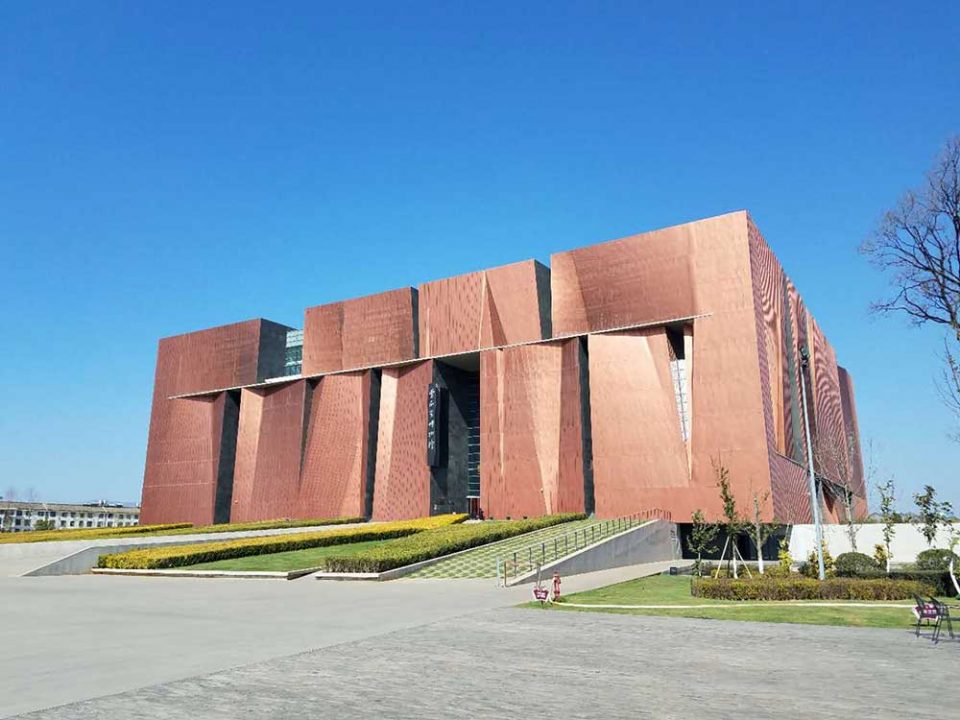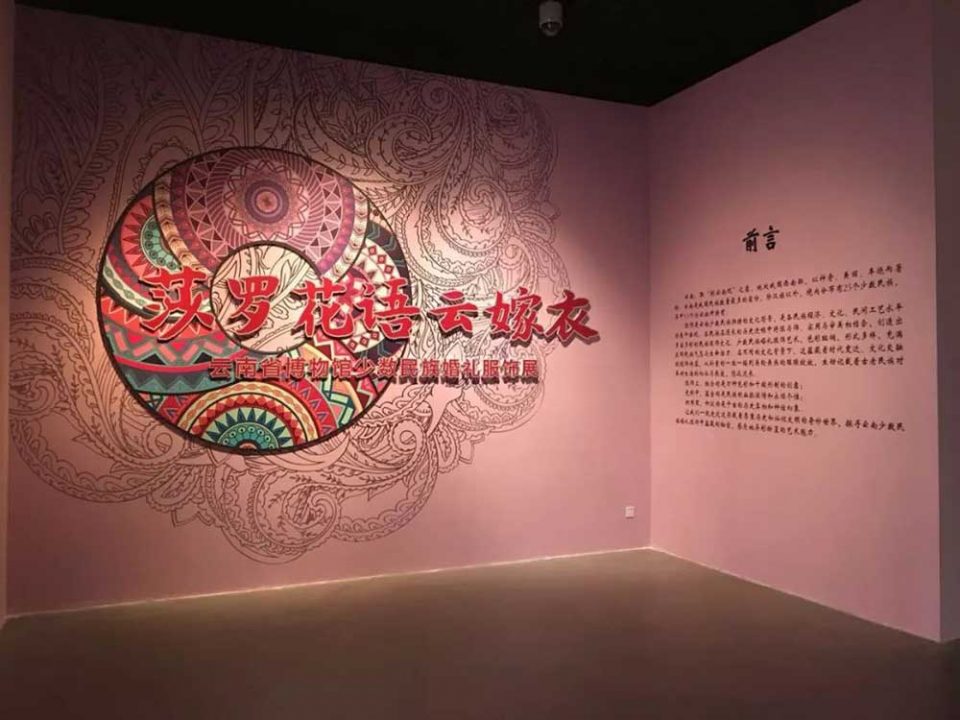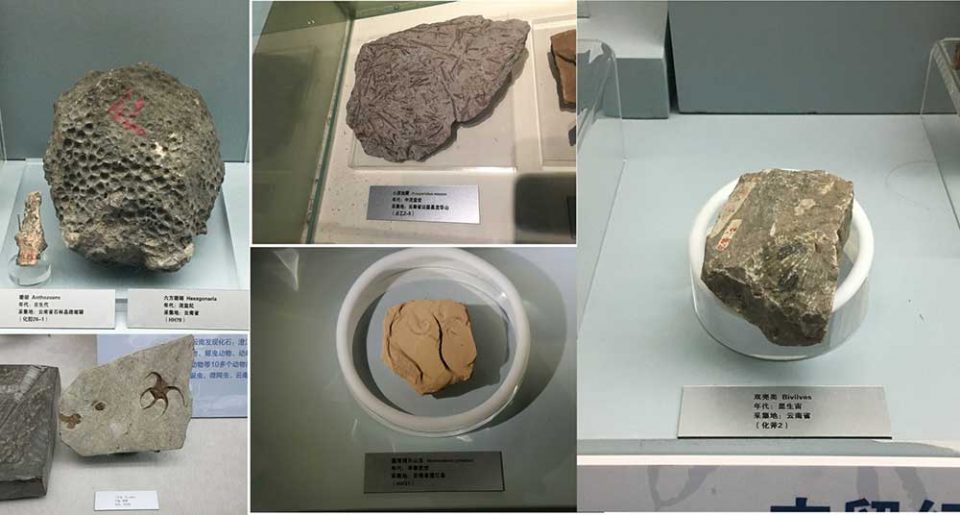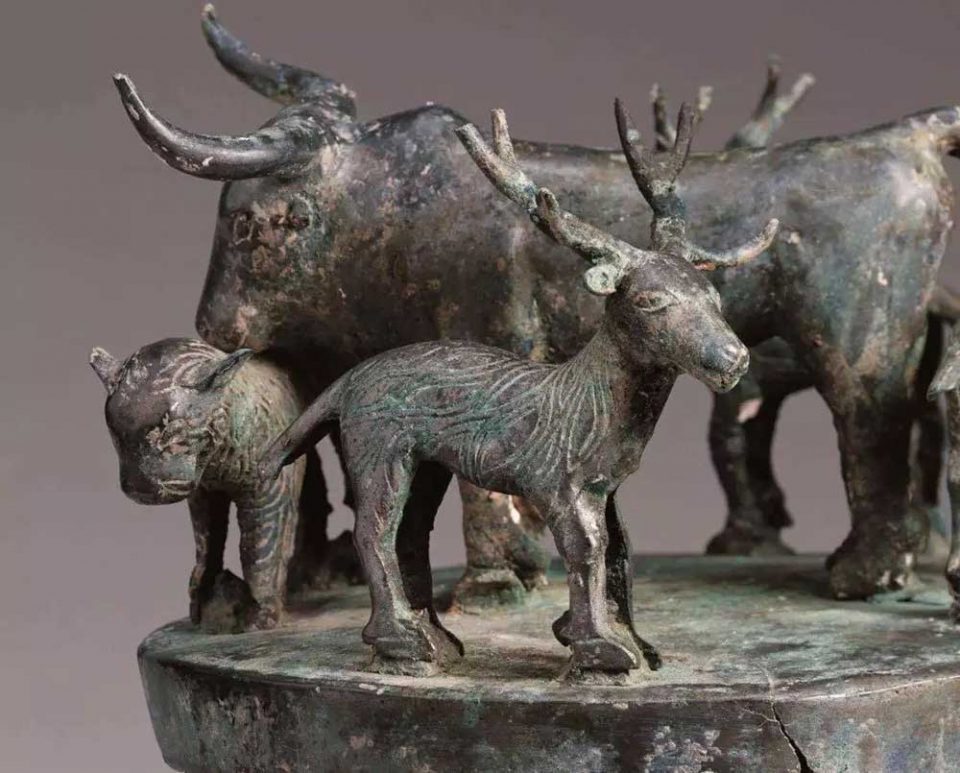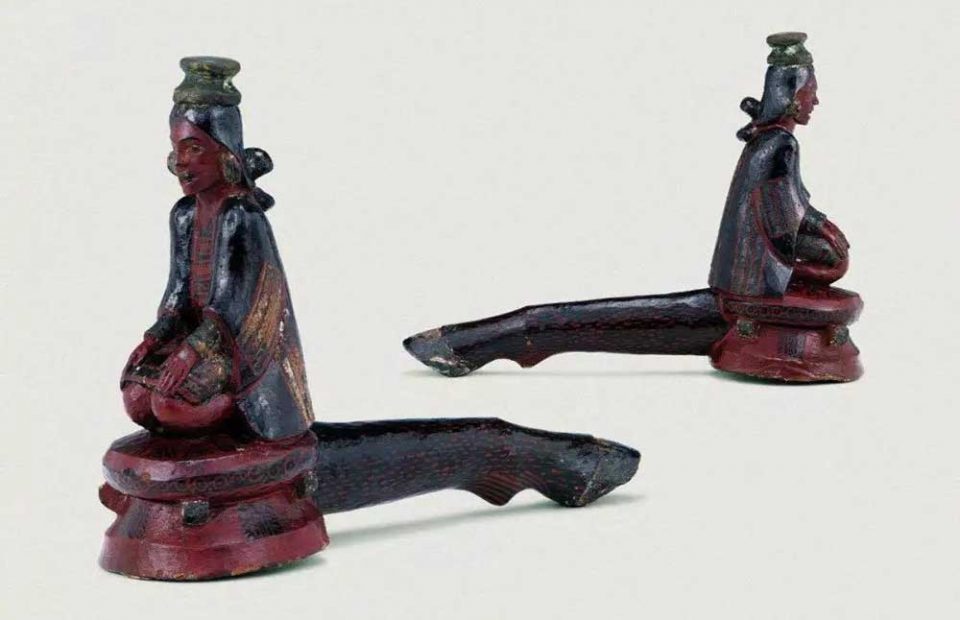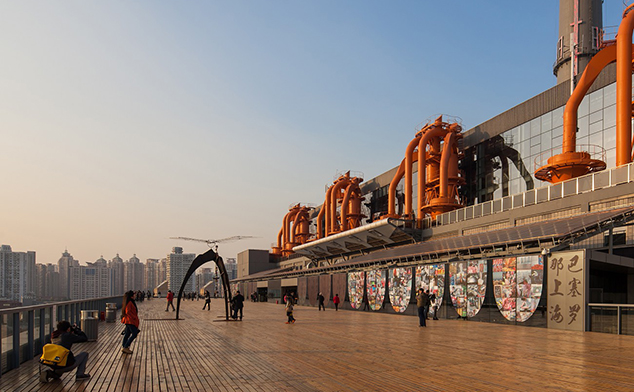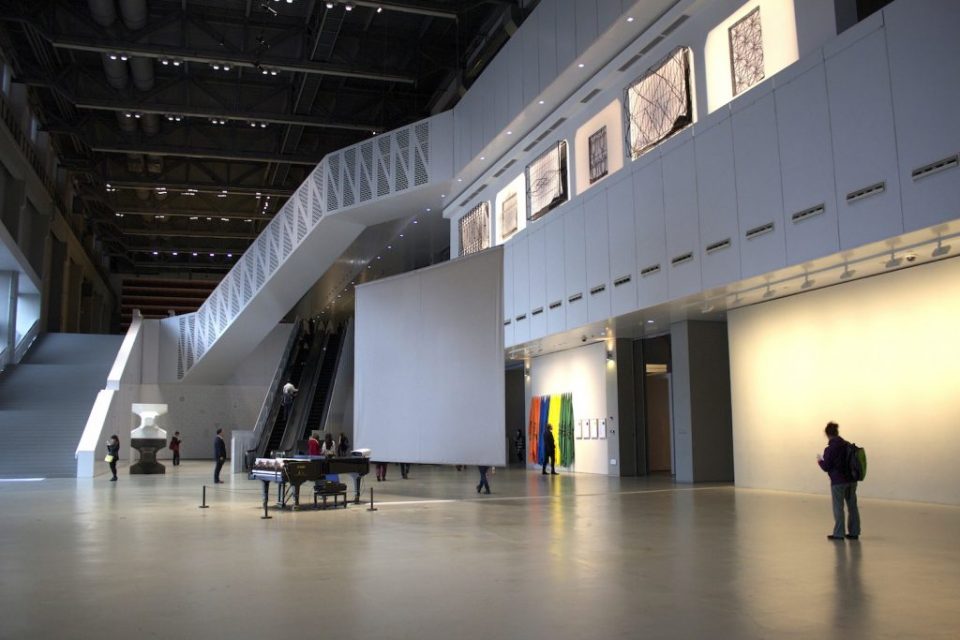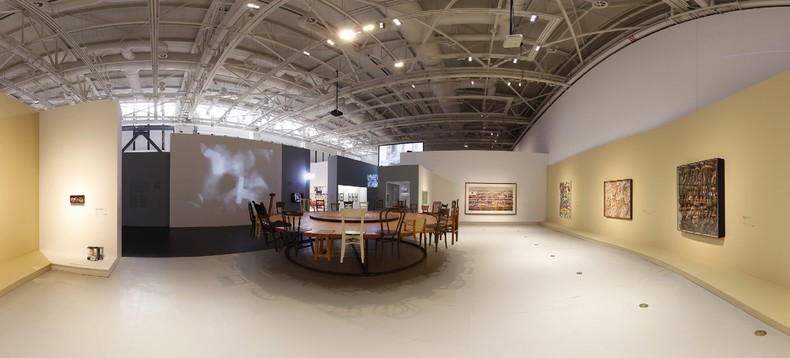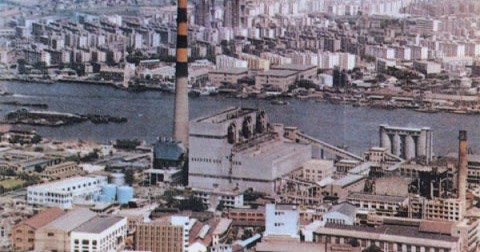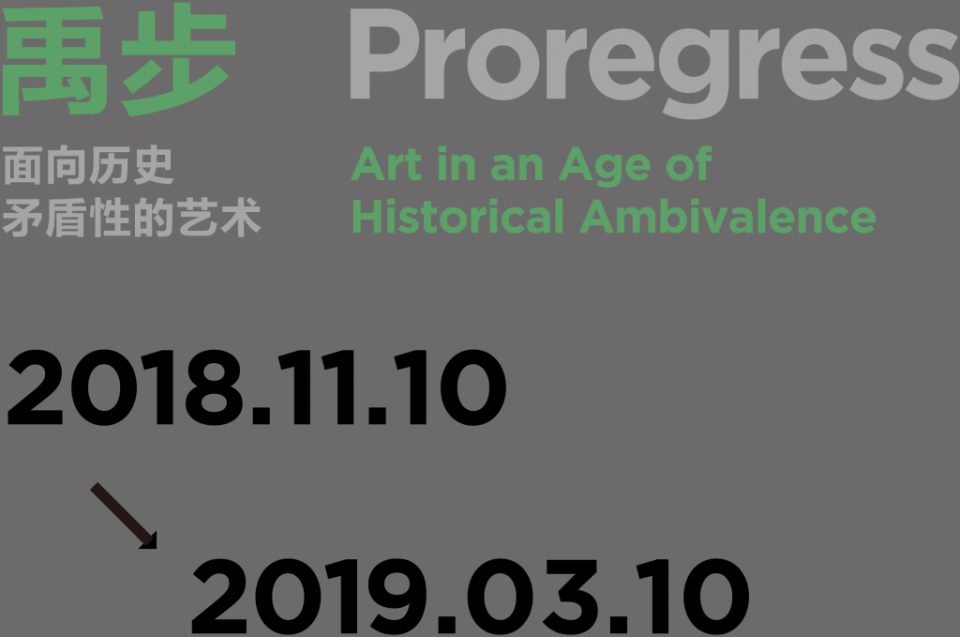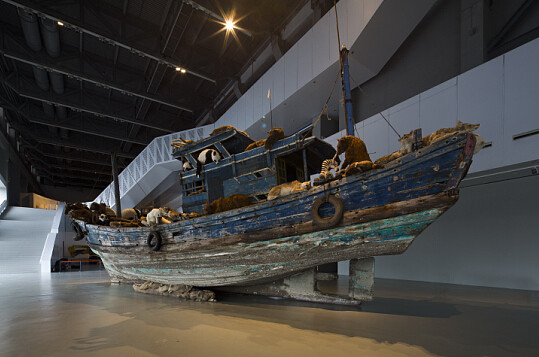The China Art Museum(link), also called the China Art Palace, is a museum of modern chinese art located in Shanghai in Pudong New District near the Huangpu River. The museum, that was previously the China Pavilion of Expo 2010, opened its doors on October 1, 2012. It is one of the largest museums in Asia since the exhibition area of the China Art Palace covers 64,000 square meters with 27 exhibition halls that show the origin and development of modern Chinese art. The China Art Palace cooperates with other world famous art museums to hold exhibitions of modern art from other countries.
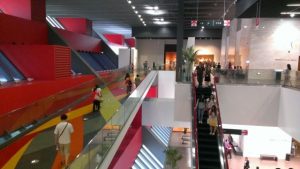
The predecessor of the China Art Museum was the Shanghai Art Museum, founded in 1956 and completely rebuilt in 1986. On March 18, 2000, the Shanghai Museum of Art was transferred to the former Shanghai Race Club. The city hosted the 2010 Expo and China Pavillion, due to its popularity, has been reopened for another six months after the end of the Expo. On November 13, 2011, the Shanghai Municipal Government announced that the China Pavilion would become the new home of the Shanghai Museum of Art under the name of China Art Museum. The new building is ten times larger than its predecessor.

Construction for the China Pavilion of the Shanghai Expo began on 28 December 2007, and the building was completed on 8 February 2010. The 63-metre high pavilion, the tallest structure at the Expo, is dubbed “the Crown of the East” due to its resemblance to an ancient crown. The building was designed by a team led by the 72-year-old architect He Jingtang, the director of the Architectural Academy of the South China University of Technology. He was inspired by the Chinese corbel bracket called daugong as well as the ancient bronze cauldron called ding.
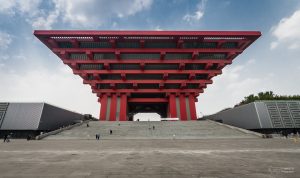
Twenty-seven exhibition halls are mainly distributed among the 49-meter floor, the 41-meter floor, the 33-meter floor, the 5-meter floor and the 0-meter floor floors: the floors are named by their altitude. The works, about 14.000, introduce the ascent of modern art in Shanghai at the end of the 19th and start of the 20th century. The basic exhibitions include four themes: the origin of modern and contemporary Chinese art, the works of art with the historical and cultural development of Shanghai, the works of art by famous painters and the development of the arts in the new century.
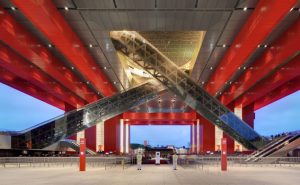
The path through the building is from the upper floor to the lower floors. The exhibition rooms 1-6 are on the 49-meter floor, the 7-10 rooms on the 41-meter floor, 11-13, which exhibit works of art from 7 other countries, are on the 33-meter floor, the floor 5 meters (pavilions 14-24) mainly exhibits works by famous contemporary artists while the ground floor of 0 meters (rooms 25-27), records the developments of Chinese art during modern and contemporary times. The museum also often hosts special themed exhibitions. In its first year of activity it has hosted over a dozen international level.

VISIT
Address: 205 Shangnan Road, Pudong New Area, Shanghai
Opening Hours: from Tuesday to Sunday from 10:00 to 18:00 (17:00 stop). Closed on Mondays (except national holidays)
CONTACTS:
Telephone: 400-921-9021
Website: http://www.artmuseumonline.org/
Credits:
Photo credits:


